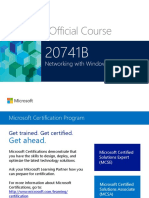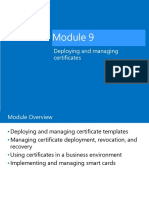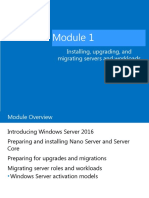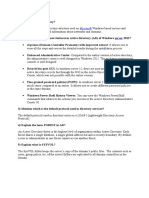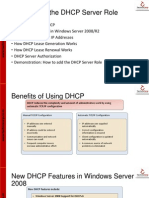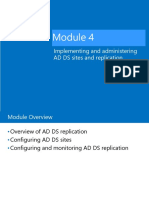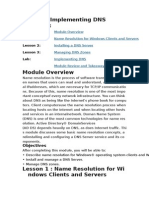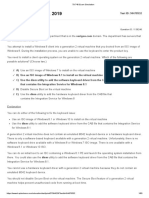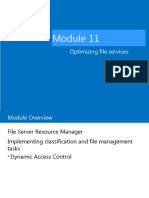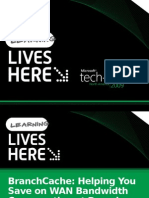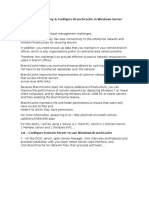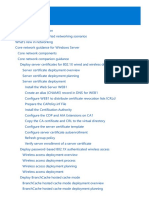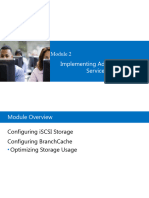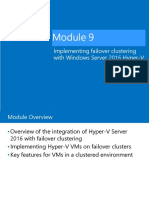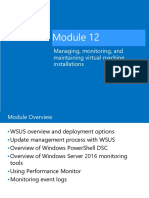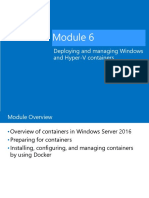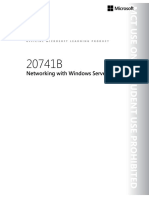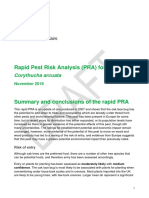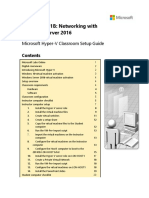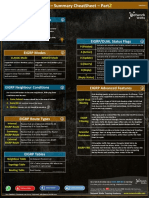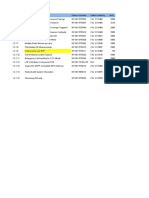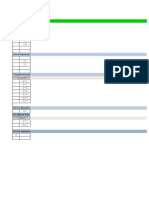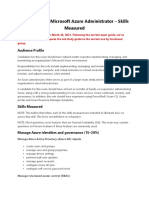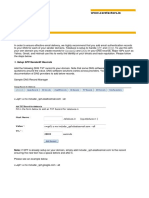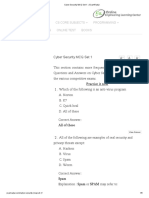0% found this document useful (0 votes)
280 views35 pagesNetworking Solutions for Branch Offices
This document provides an overview of Module 9 which focuses on implementing networking for branch offices. It discusses considerations for branch office networking such as security, availability and performance. It also covers options for providing connectivity, Active Directory and DNS services, presentation virtualization, file services and print services to branch offices. The document then describes implementing Distributed File System (DFS) and BranchCache specifically for branch offices, including configuration, requirements, modes and monitoring tools. It includes demonstrations of configuring DFS namespaces, replication and BranchCache.
Uploaded by
SanitaracCopyright
© © All Rights Reserved
We take content rights seriously. If you suspect this is your content, claim it here.
Available Formats
Download as PDF, TXT or read online on Scribd
0% found this document useful (0 votes)
280 views35 pagesNetworking Solutions for Branch Offices
This document provides an overview of Module 9 which focuses on implementing networking for branch offices. It discusses considerations for branch office networking such as security, availability and performance. It also covers options for providing connectivity, Active Directory and DNS services, presentation virtualization, file services and print services to branch offices. The document then describes implementing Distributed File System (DFS) and BranchCache specifically for branch offices, including configuration, requirements, modes and monitoring tools. It includes demonstrations of configuring DFS namespaces, replication and BranchCache.
Uploaded by
SanitaracCopyright
© © All Rights Reserved
We take content rights seriously. If you suspect this is your content, claim it here.
Available Formats
Download as PDF, TXT or read online on Scribd
/ 35


















